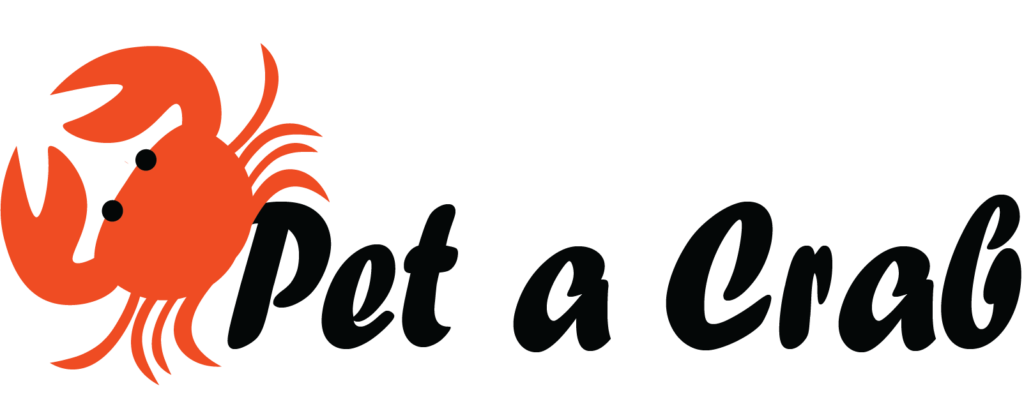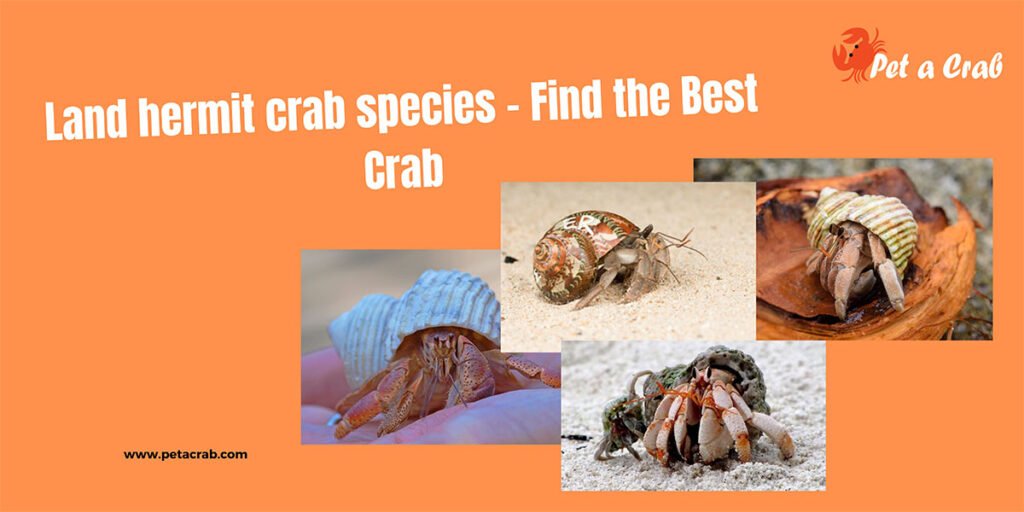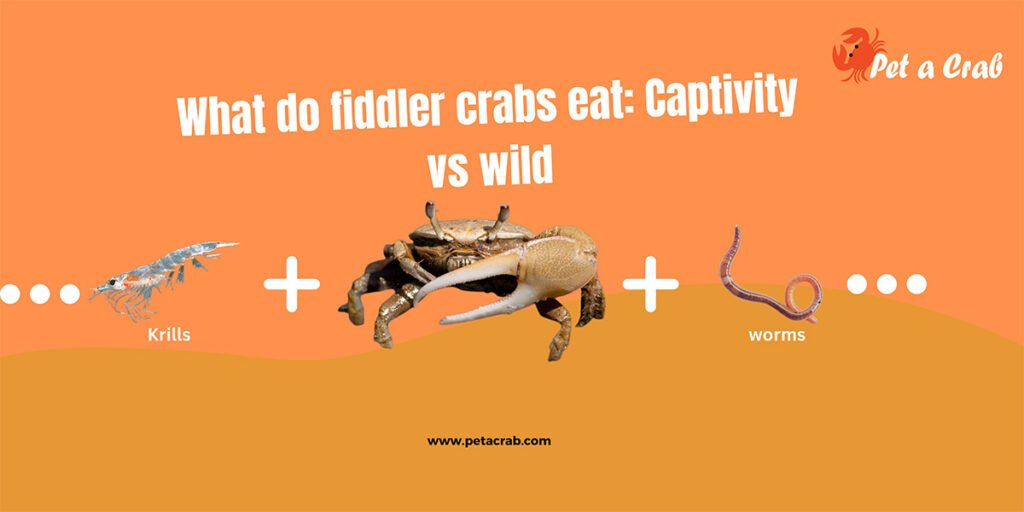Gaudy clown crab, a crab that doesn’t fear doing stuff exposing its body, a deadly combination of beauty and toxicity; is becoming more popular these days amongst aquarium enthusiasts. Due to its limited information, you may find difficulties keeping this crab. Here I gathered all the information you need to know about this crab.

They need the very least care with some extra fish food; maintaining their tank requirement is the key to keeping a gaudy clown crab. However, you may miss or misunderstand something for being different from most of the crabs.

Quick overview of Platypodiella spectabilis
| · Care Level | Easy |
| · Name | Gaudy clown crab, Clown crab, Herbst’s Platypodia, Farbenprächtige Clowns-Krabbe (German) |
| · Scientific name | Platypodiella spectabilis from the family of Xanthidae |
| · Distribution | Western Atlantic, Florida, Bahamas, Caribbean, Gulf of Mexico, Antilles, Venezuela, Honduras, and Brazil(1) |
| · Natural habitat | Crevices of algae, rock, zoantharians, and sponge; depth around 10 ft |
| · Temperament | Peaceful |
| · Breeding | Challenging, no previous record found about their breeding |
| · Size | up to 2 cm to 2.5 cm (0.75 to 1 inch) |
| · Optimal temperature | 72-78 °F (22 to 26 °C) |
| · Diet | Omnivore |
| · Sleeping nature | Nocturnal |
| · Life span | Around 3 years |
| · Reef compatible | Yes/Caution |
| · Color | Orange, Red, Yellow, Black and White |
| · Mating | Indirect sperm transfer and courtship ritual |
Interesting facts about clown crab
- Diurnal – There is an advantage to keeping gaudy clown crabs. Tough being a nocturnal it remains active during the day. So there is a high chance you will see them operative in the daytime.
- Unusual burrowing – Most of the crabs burrow under the substrate but this crab likes to burrow in sponge and Palythoa with the opening keeping small and hide there.
- Lethal poison holder – In nature, different crabs have different ways of protecting themselves from predators; some can camouflage well to the surroundings(2), and some carry gastropod shells(3) and anemones (4). But the gaudy clown crabs inherit one of the deadliest poisons known to nature, they get this palytoxin by eating Zoas and Palys which work as their primary defense system and the primary reason behind their colorful appearence.
- Appearance – They have red to orange markings covered by dark and then white outlines with a yellow background and some dots on their whole body. Each of the crabs has a unique pattern making them easy to recognize. Coral related crabs are usually colorful, as are clown crabs.
Another nearly same looking crab is the harlequin crab which you may get confused by.
- True crabs – They are not pretended crabs like hermit crabs and porcelain crabs, they are actual crab
- Different species – Five species under the genus Platypodiella have been described. Platypodiella picta, Platypodiella gemmate, Platypodiella georgei, Platypodiella rotundata with the most popular aquarium pet being Platypodiella spectabilis.
- Coral growth control – This crab can help control overgrowing corals that are taking up all space in the tank.
Dwarf gaudy clown crab care

Tank setup
Tank size
Nothing too fancy in your old aquarium just leave the tank as it is for the new guest.
Unlike other crabs, clown crabs do not need much space meaning you can take a 5-10 gallon tank for them; bigger if possible.
Substrate
Any saltwater aquarium substrate found in shops will be okay like aragonite reef sand. You can mix crushed coral sand with the primary substrate and also some gravel.
Decoration
They will need plenty of corals and rocks to climb on, so be sure they get that. Saltwater plants don’t do any better with the gaudy clown crab. But, however, if you want you can add 1 or 2; make sure the plants don’t cover much of the space. Because it is corals that they depend on.
Temperature and water parameters for gaudy clown crab
Temperature range should be between 72-78 °F (22 to 26 °C). If you are keeping with other tank mats ensure they share the same temperature and water condition and don’t forget about the thermometer to keep an eye on the temperature.
The dkh of the water should be 8 to 12 with the pH and sg of 8.1-8.4 and 1.023-1.025
The light should mimic the natural day and night with a typical LED as usual.
Gaudy clown crab feeding
The gaudy clown crab mainly depends on the palythoas, zoanthids, and anemones. They will disturb them to eat them as they do in the wild, you have to be acceptable about this. They can’t eat much and destroy the reefs totally as their size stomach size is too small.
Besides that, they will need a balanced diet with calcium rich food like cuttlebone. You can give them fish flakes and pallets or any other commercial food you like. But stop providing if they don’t like a particular food; it will only spoil the water condition if there are no tank cleaners in the bottom
There is an interesting behavior found by John; when the crab gets hungry, it flips onto its back and wiggles its legs like a crying child. (Not sure all crabs will do that)

Tank mates of gaudy clown crab
There should be tank cleaners like hermit crabs; you can go for other crabs like marble rock crab and arrow crab. Ensure the tank mates are peaceful or at least don’t try to eat the strange thing.
#Faqs
Gaudy clown crab for sale
This crab is so rare you can barely find it in online stores unless you have good luck.
The gaudy clown crab is in habitat loss threat because of coral reef destruction and climate change. As their breeding has not been brought to light we have to depend on the wild where their supply comes from. I hope there will be an easier way of getting them someday without taking them from their natural habitat.
How big are gaudy clown crabs?

This crab is around 1 inch in size making them cute and adorable. However, they are very bold compared to their size as they are poisonous. They expose their body in the daytime and pretend like “Hey! If you have the courage then eat me”


